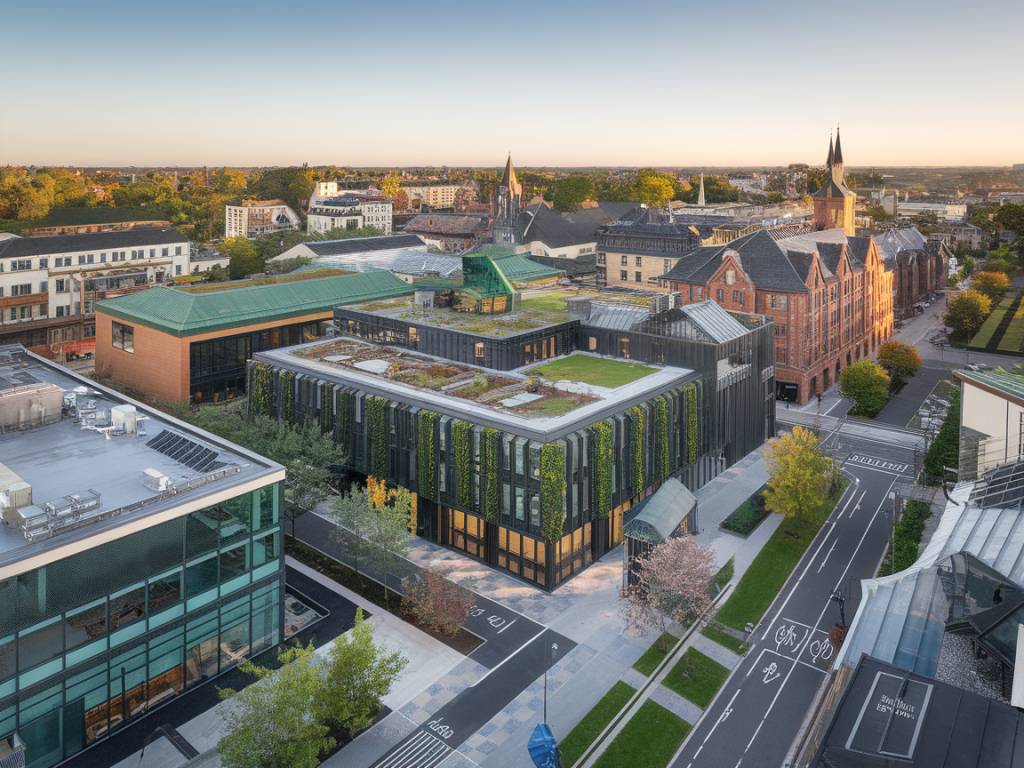Rethinking Urban Landscapes
As the global population continues to migrate towards urban areas, cities face the challenge of accommodating more people while maintaining environmental sustainability. How can we envision urban spaces that blend seamlessly with the natural environment around them? The answer lies in promoting sustainable urban planning.
The Green Blueprint for Future Cities
Sustainable urban planning is not merely a trend; it’s a necessity. The goal is to design cities that meet current needs without compromising the ability of future generations to meet theirs. This involves integrating systems that efficiently manage resources like water, energy, and waste.
Think about it: would a city with more green spaces, renewable energy, and efficient public transport be a reality or just a dream? Time and again, cities like Amsterdam and Singapore have proven it’s possible. They’ve set benchmarks by adopting innovative solutions, such as rooftop gardens and smart grids, which not only improve urban living but also reduce environmental footprints.
Engaging Communities in the Transition
The heart of transforming urban landscapes lies in community involvement. Sustainable urban planning isn’t just about policymakers and urban developers; it requires active participation from the residents themselves. This calls for raising awareness about environmental impacts and the benefits of sustainable urban living.
Can you imagine a community where citizens have a say in the urban design process? In Portland, Oregon, the residents actively partake in forums and workshops, shaping initiatives that resonate with their vision for a green future. Empowering communities to participate actively fosters a stronger connection between people and their environment.
Leveraging Technology for Sustainability
Innovation and technology are key drivers in reshaping urban spaces. Smart cities stand as a testament to what technology can do. Using data analytics and IoT (Internet of Things), urban planners can optimize traffic flow, reduce energy consumption, and improve air quality.
For instance, cities like Barcelona have implemented smart streetlights that reduce energy consumption by adjusting their brightness based on pedestrian activity. Isn’t it fascinating how data can help illuminate a more sustainable future?
The Role of Biodiversity in Urban Planning
Preserving biodiversity within urban environments plays a crucial role in sustainable planning. Incorporating parks, green corridors, and urban forests into city landscapes not only supports local wildlife but also enhances the quality of life for residents.
Consider the High Line in New York City—a prime example of transforming an old rail line into a vibrant green space. This not only revitalized the area but also provided a habitat for a variety of plants and animals, becoming a green oasis amidst concrete structures.
Adopting Climate-Responsive Strategies
One of the foremost challenges faced by urban areas is climate change. Cities are significant contributors to greenhouse gas emissions, but they can also be part of the solution. By adopting climate-responsive designs and construction materials, cities can reduce their carbon footprint.
For example, implementing green roofs and cool pavements can diminish heat islands. Isn’t it exciting to think that a change in urban infrastructure could lead to a substantial reduction in energy consumption and an improvement in urban microclimates?
Collaborative Efforts for a Sustainable Future
Creating sustainable cities is a collective effort and cannot be achieved in isolation. Partnerships between governments, businesses, and local communities are vital. Collaborations can bring about groundbreaking changes, ensuring cities evolve in harmony with the planet.
Reflect on Copenhagen’s target to become carbon neutral by 2025. This ambitious goal highlights how policy, innovation, and citizen involvement can coalesce to create a model for sustainable urban living. Should other cities follow suit, the ripple effects could be transformative on a global scale.
Embracing a New Urban Paradigm
In conclusion, the pathway to sustainable urban planning is paved with opportunities and challenges alike. It’s about taking bold steps to redefine the urban narrative while honoring the delicate balance of ecosystems. Such a journey requires vision, commitment, and the collective will to embrace change.
Isn’t the idea of living in harmony with nature within reach? Through meticulous planning, community involvement, and technological advancements, we can transform our cities not only for us but for generations to come. It’s time to rethink what our future cities could look like and build them together with nature.

